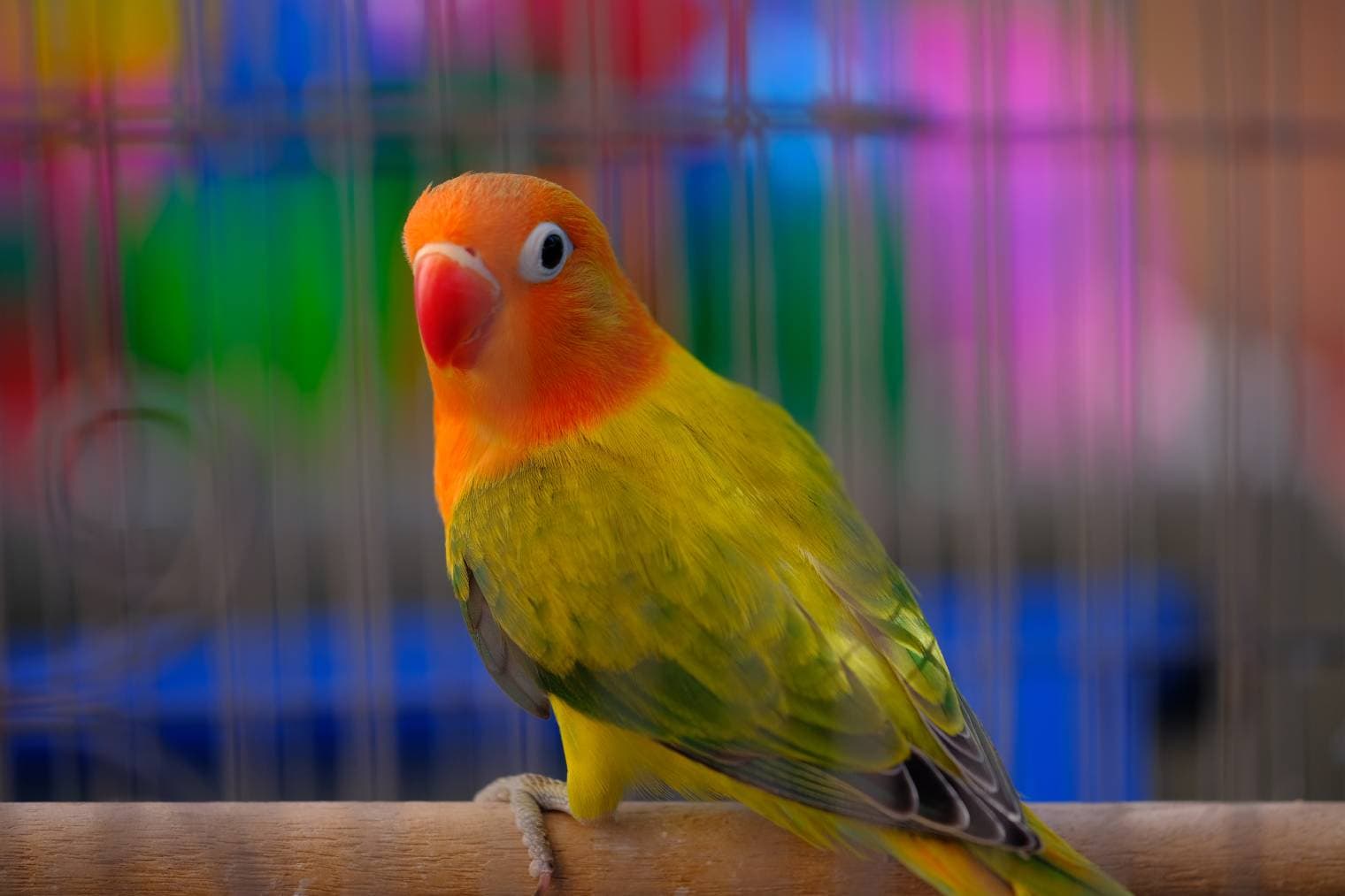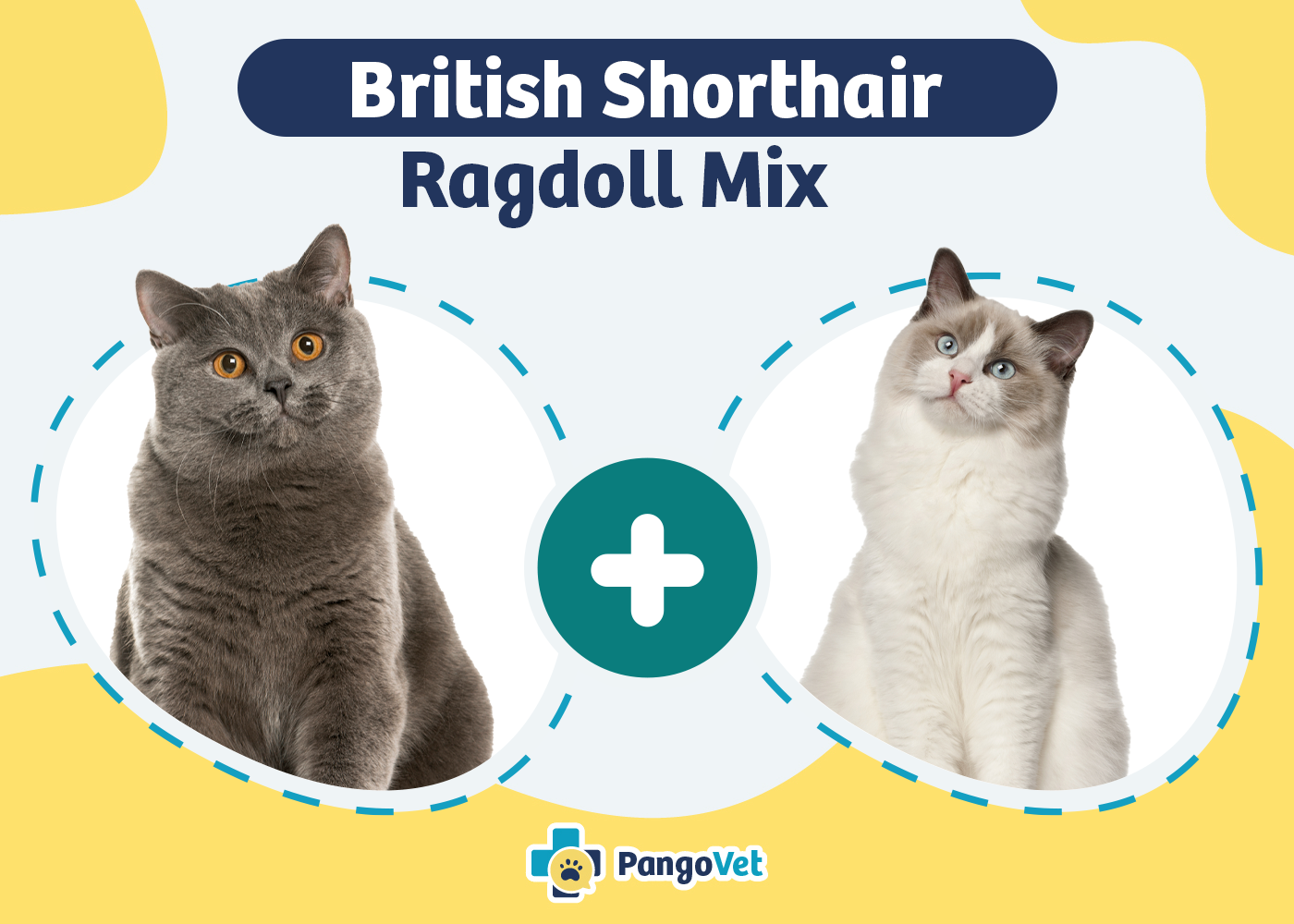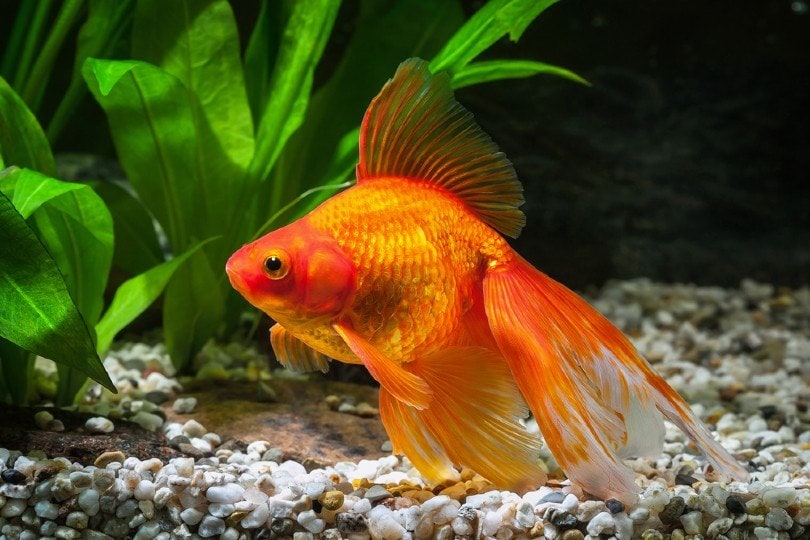Click to Skip Ahead
The lovebird is a small attractive parrot that is popularly kept as a pet bird. They have a large bill and a rounded tail and live for a decent length of time—the oldest lovebird documented lived to be 17 years of age.1 They come in a variety of different colors, and opaline is a common favorite. The color is a new mutation among peach-faced lovebirds and was first discovered in 1977. The opaline’s body primarily has irregular-colored patterns, which makes it an attractive version of the lovebird.
This article will provide you with everything that you need to know when it comes to the opaline lovebird.
 Opaline Lovebird Overview
Opaline Lovebird Overview
| Common Names: | Opaline lovebird |
| Scientific Name: | Agapornis roseicollis var. |
| Adult Size: | 5–7 inches |
| Life Expectancy: | 10–15 years |
Origin and History
The opaline lovebird originated in the United States. They’re not an individual lovebird species but are rather a color and pattern mutation in peach-faced lovebirds. The mutation was brought about by breeders who bred a pair of dark green peach-faced lovebirds together. It seems to have sex-linked characteristics. The male parent transfers the gene to the daughter, and the female transfers it to her son. You only need one lovebird with a dark factor gene to reproduce this opaline mutation. The females either show the full opaline color or lack it altogether.
Lovebirds are a small group of nine species of the old-world parrot family. Eight are native to the main African continent, and the other is native to Madagascar. Most species of lovebirds are kept as pets and have been selectively bred in aviculture to produce their beautiful colorations.
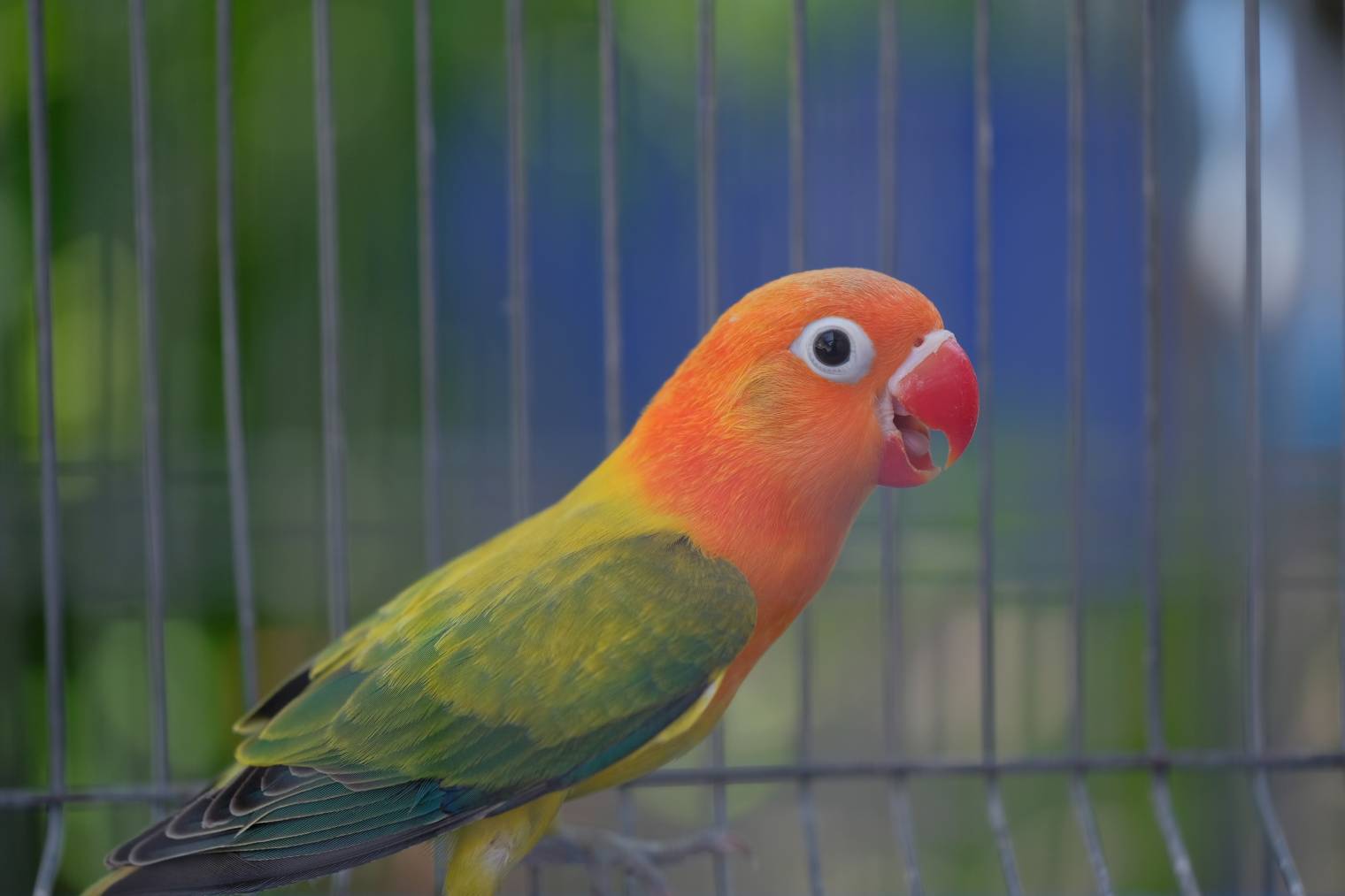
Temperament
These are affectionate and social birds that form close bonds with their owners. Lovebirds enjoy living with their kind, which satisfies their need for social interactions. They can also be kept in breeding pairs, and each forms a long-term commitment to their mate. This is the best form of enrichment and attention they can get besides human interaction.
These lovebirds are commonly described as active, playful, curious, and full of personality for such small birds. However, it is important to note that these birds can become aggressive and territorial if they have not been socialized properly from a young age. This can cause them to aggressively flap their wings or bite out of irritation and fear.
- Attractive colors
- Can be kept in small cages
- Easily bond with their owner
- Bite when stressed or scared
- Hard to tame over 3 years of age
Speech & Vocalizations
Opaline lovebirds are quite chatty with each other and will frequently chirp. It is typically a low chirp that should not disturb the household too much. They do not speak as parrots do, so control over the noises they make is low. Many lovebird owners will describe their chirping as calming, though, and it will eventually become white noise that you will get used to.
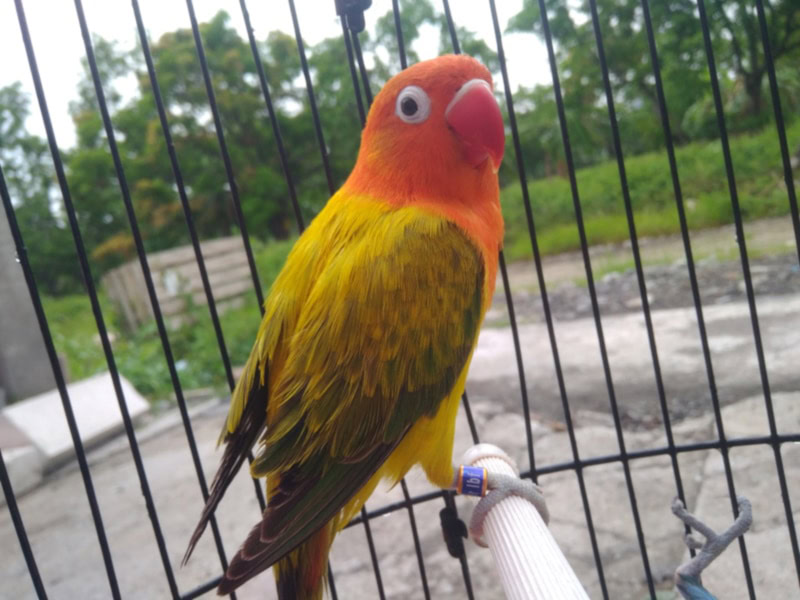
Opaline Lovebird Colors and Marking
The opaline colorations consist of the lovebird having a red or orange head rather than the peach color that is seen in standard-colored lovebirds. Their wings are typically light green or yellow, and some consist of a mixture of the two. The coloration does not fade into each other, which makes the opaline lovebird stand out among other variations.
There are many different versions of opaline lovebirds, and they can also be labeled as pied or edged dilutes. The opaline lovebird has a faint white coloration separating the head color from the rest of the body. Their features are distinct, and it is easy to determine whether a lovebird has opaline coloration.
- Orange-headed lutino opaline: The head is a dark orange color, and the rest of the body is bright yellow with dark red and lines of red at the tips.
- Red-headed lime opaline: The face is a light orange fade with a light green body and dark red at the ends of their tail feathers.
- Peach-faced heavy pied opaline: The front of the head is a mixture of red and orange, and the body is light green.
- Red-headed edged dilute opaline: The body is completely light green, and the head is deep red and orange, which is distinctive in contrast to the body.
- Red-headed green opaline: This is the most common color in opaline lovebirds. The head is set apart from the body and is a lovely ruby and orange color. The body is dark green, and white feathers fade to separate each color.

Caring for the Opaline Lovebird
Cage Size
Lovebirds may be small, but they require the largest possible cage to thrive. Not only does a large cage enable them to fly and stretch out their wings, but it also helps lower stress by ensuring they do not feel cramped. The cage should be above ground and away from other pets like dogs or cats. The general minimum-sized cage for a pair of lovebirds is 20 inches long and 25 inches tall. This also allows you to add in enough toys to keep them busy and enriched. The more lovebirds that you plan to keep, the larger the cage should be.
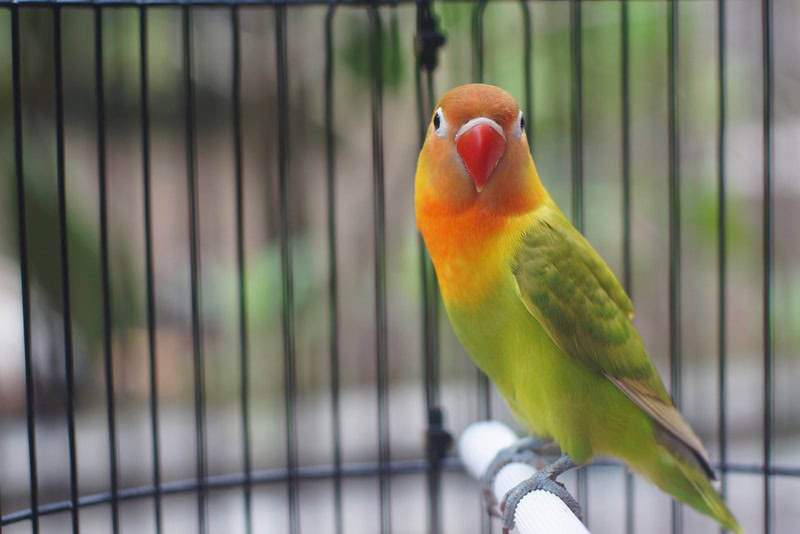
Grooming
Lovebirds typically groom each other. This is a form of bonding and can help relax both birds. They will also take baths in shallow bowls of fresh water. This behavior is natural, and they will bathe more often in the summertime so they can cool themselves down. You do not have to bathe them yourselves, and you should not use any form of shampoo unless otherwise advised by an avian vet.
Companionship
Lovebirds do not have to be kept together, but it will make them harder to tame, and they will miss out on the natural bond between their kind. It is best to keep them in a male and female pair or same-sex groups. Even if they get plenty of interaction with their humans, they will still not achieve the safety and bond they will feel with other lovebirds.
Common Health Problems
These birds do not get many health problems if they are healthy and kept in the right conditions. Keeping your lovebirds healthy is simple if you always keep them in a clean cage with fresh food and water available. They are prone to developing several diseases that are common among many types of pet birds.
The following diseases are common in birds are fighting or kept out in cold temperatures. They also are spread through different birds, unclean environments, and rotting food. These health issues are serious and require immediate treatment from an avian vet.
- Psittacine beak and feather disease (from fight wounds)
- Yeast infections
- Avian pox (from wild birds)
- Egg binding (females only)
- Ticks
- Bacterial infections
- Parasites
- Coccidiosis
- Intestinal influenza
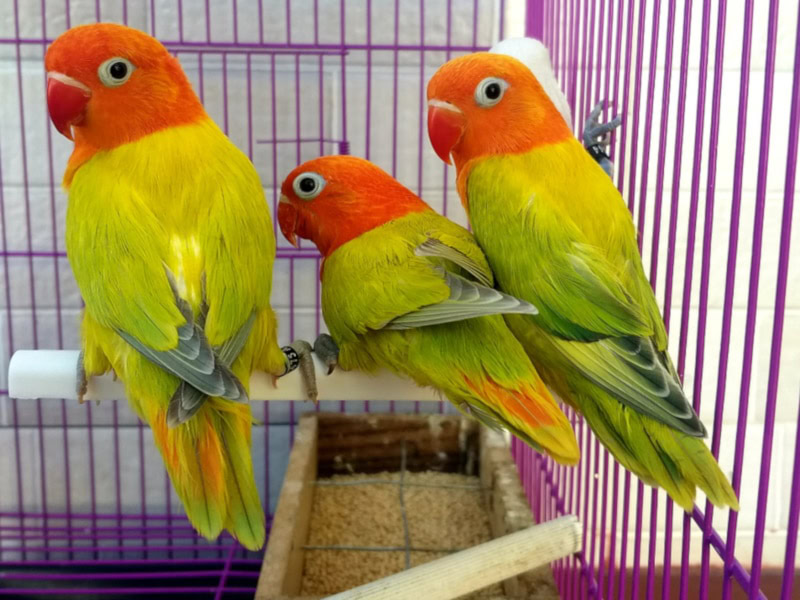
Diet and Nutrition
Lovebirds are granivores and frugivores. In the wild, they will consume foods like seeds, berries, fruits, nuts, grains, corn, maize, grasses, and leaf buds. This is quite a varied diet, and it should be replicated in captivity to ensure optimal nutrition. A high-quality lovebird seed mix will suffice as a staple diet. You should supplement their diet with fresh fruits and veggies like apples, carrots, zucchini, broccoli, mango, and papaya. The base of the opaline lovebird’s diet should consist of 60% to 80% seed and pellet mixtures, and the other percentage should be made up of fresh foods.
Exercise
The main type of exercise and enrichment your opaline lovebird should receive is through toys and a large amount of space in their cage. Your lovebirds should be able to fly to different areas of the cage with ease. This means without them knocking into toys or other lovebirds. Birds love to stretch their wings and it also allows for relaxation. Your lovebird will become stressed if they do not get enough exercise or mental stimulation. Time out of the cage is also important and they should be allowed to fly around a small, bird-proofed room.

Where to Adopt or Buy an Opaline Lovebird
You can adopt or purchase an opaline lovebird from most pet stores that sell different types of parrots and birds. They can charge a minimum of $50 per bird, but high-grade opaline lovebird colors will cost more. Before you decide to purchase an opaline lovebird, you should check if local avian shelters have one up for adoption. The adoption fee is typically low and is in place to help support the rescue or shelter. If you are looking for high-grade opalines with rare colors, an ethical breeder is the next best option. Breeders will typically sell opaline lovebirds for $100 to $250.
 Final Thoughts
Final Thoughts
Opaline lovebirds can make a great addition to your family. Their small bodies are full of personality, and they are typically easy pets to care for. It is recommended to take your bird to an avian vet to get their wings clipped every few months. This will prevent them from flying long distances in the instance that they escape out of an open window or door. If you have a love for birds and want to add a colorful parrot to your home, the opaline lovebird is the perfect option.
You may want to read this next:
Featured Image Credit: Wasipongkorn, Shutterstock
